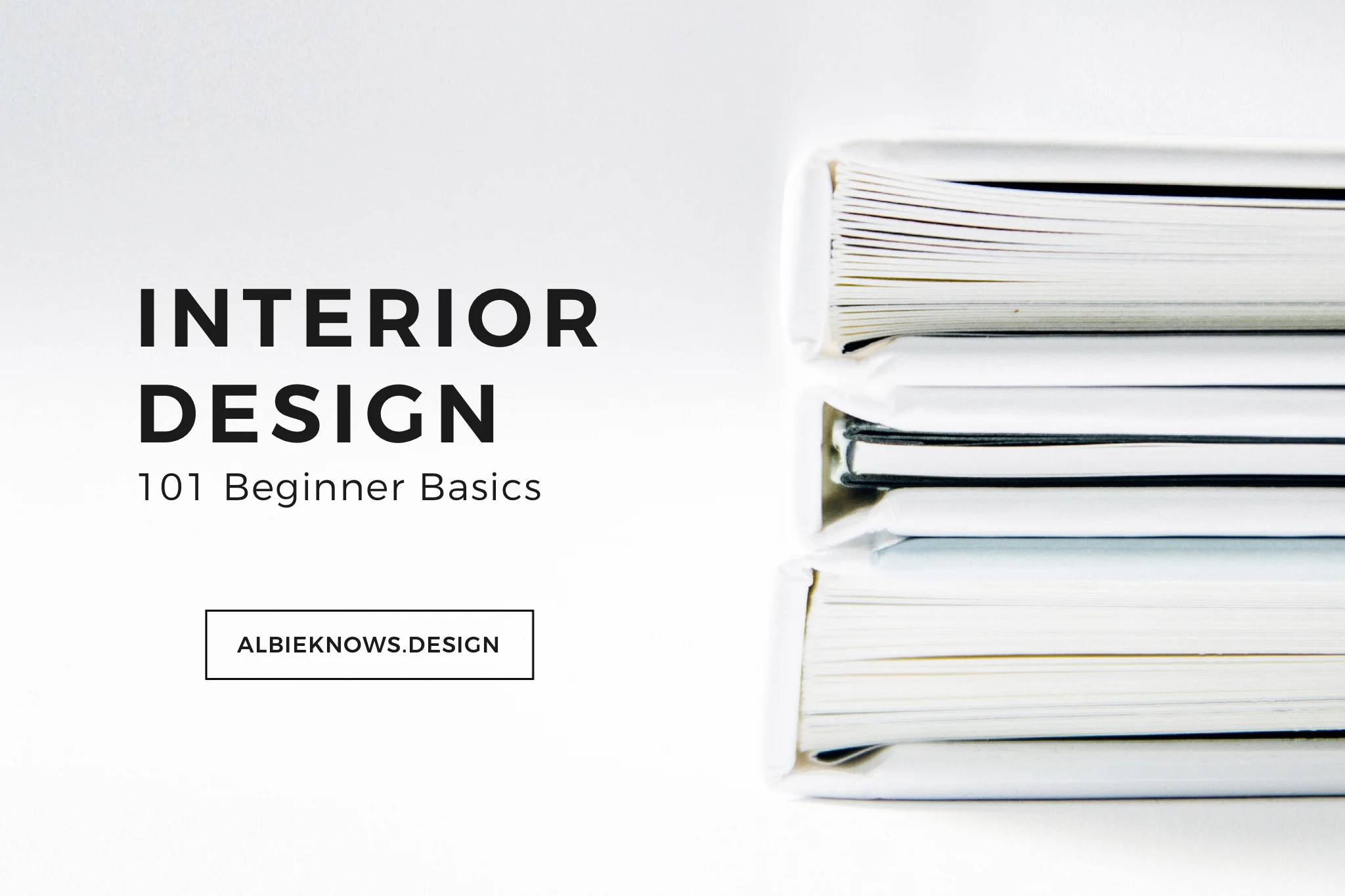Interior Design 101
Whether it’s an apartment you’re renting or a home you’ve purchased, designing your space can be incredibly exciting yet equally overwhelming. Where do you start? What do you buy? How much will it cost? You have this vision in your head of how you want everything to look but you have no idea how to make it happen in real life. Guess what… Albie knows (see what I did there, lol).
What's supposed to be a fun & inspiring experience can easily and quickly turn into an anxiety attack in the making. But I don't say any of this to scare you -- actually the opposite. So often armed with their Pinterest boards & favorite HGTV episodes, people dive head first into designing & decorating their space. No plan. No strategy. And that's where things can go really wrong, really fast.
Here are some super easy and super practical first steps you can take to set the foundation for designing your space.
1. Have a Plan.
Before you can do anything, you have to know your “5 Ws + H”…
– Why: think about what’s motivating this change
– Where: if you have multiple rooms (or the whole house) in mind, prioritize spaces
– When: having a schedule keeps everything organized and on track, especially in a large redesign; but you’ll also need to be flexible for any unexpected surprises
– What: you need to have a vision (and a realistic budget) so you’re not just shopping haphazardly
– Who: this means designers, contractors, plumbers, electricians, etc; research & choose wisely because not only do you want professional work, you also want a team that’ll execute your vision
– How: whether you’re a diy’er or you’d rather have a designer spearhead the whole thing, you need to decide early what your role will be
2. Find Your Style.
Everyone thinks they know what their style is & get fixated on that, convinced that’s what they want…until they get it.
– Look for inspiration. Design blogs, magazines, Pinterest, Instagram… all great places to start really nailing down your likes and dislikes.
– Know Your Space. Having a sense of your design style is futile if you don’t know the space you’re working with. This means taking measurements of everything — including your entryway. How unfortunate would it be if your dream sofa couldn’t even make it through the front door? Knowing your space also means taking into account lighting & architectural features.
– Choose your palette. Knowing your space is critical to choosing the right color palette. In addition to setting the tone, the colors you choose will ultimately define the space. For example, large rooms can be made to feel smaller and cozier if you paint them in warm, bright colors; whereas if you want to make a smaller room feel bigger you’d choose cooler, lighter shades. Once you choose a warm or cool palette, introduce new hues by way of accessories & commitment free items.
– Examine your lighting. Lighting provides scope to add depth and interest. During the day, evaluate the amount of natural light the room gets and figure out where you need to brighten things up.
Tip: If you don’t get enough natural light, mirrors maximize light you do have.
3. Pace Yourself.
Let go of the idea that a room needs to feel completely “done” and resist the urge to buy all your furniture in one trip. Buying a few things at a time is not only more affordable, but also, by living in the space, you’ll get a real sense of what you need. There’s nothing wrong with having an empty wall or floor space. One of the fun things about designing is watching as your space evolves as you edit your choices. Take things slowly, and enjoy the process.
– Furniture
Understand the importance of a statement piece. Being too safe with your choices can lead to a room that looks bland. For example, just because a company sells sofas and chairs from the same line, doesn’t mean you have to buy the entire set. It’s more visually interesting to have a variety of different, yet complementary, pieces; however be careful not to sacrifice comfort & function for the sake of style.
– Flooring
Be mindful of the usage and traffic, then choose accordingly. Hardwood flooring is naturally beautiful and long lasting, but is also costly and needs careful maintenance; a cheaper alternative to hardwood is engineered flooring, which is lighter with a consistent look. Adding an area rug (even on carpet) is an easy way to add color or texture, while also protecting the floor and defining the space.
– Art
Take your time and don’t be afraid to experiment. Figure out what styles inspire you, and how much you’re willing or able to invest in art. Art shows and street vendors are great for purchasing original pieces from up-and-coming talents. Next, decide whether you want to hang one big piece or a gallery wall, but pay attention to scale.
– Accessories
Harmonize with the interior style of the space. At all times it is the overall feel of the space which is paramount. Pillows, throw blankets, books, and decorative objects are the final layers you add to a room to unify the space; choose items that reflect your style and interests. Remember, it still needs to be a functional living space, so avoid crowding every surface.

